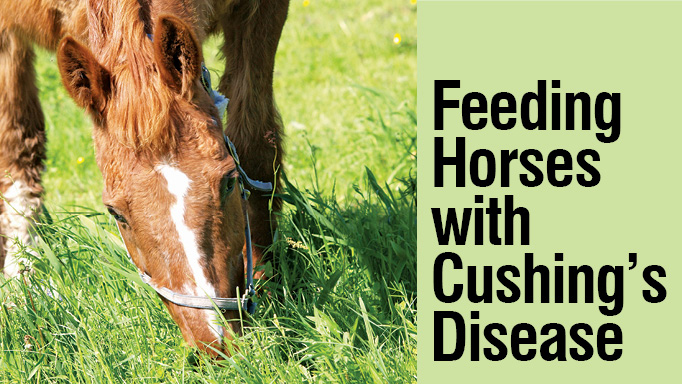What is Cushings?
Cushing’s Disease, or Pituitary Pars Intermedia Dysfunction (PPID), is a relatively common, progressive condition that affects older horses (generally 18-plus years). Symptoms of Cushing’s include a longer and often curly hair coat that doesn’t shed as easily in the summer, and increased water consumption and urination. Cushing’s Disease is the result of a tumour in the pituitary gland, which is located within the lower region of the brain. The tumour causes the pituitary to secrete large amounts of the hormone adrenocorticotropic hormone (ACTH). ACTH in turn causes the adrenal glands to secrete another hormone in excess: cortisol.
Cortisol is a well-known stress hormone with several roles within the body, including increasing blood glucose concentrations to provide the body with the fuel needed to fight the stress. This excess glucose can result in increased insulin secretion from the pancreas in an attempt to control blood glucose concentrations. The glucose may be elevated enough to spill into the urine, resulting in frequent urination and increased thirst/drinking.
Losing glucose, and therefore calories, through the urine can also make it challenging to keep weight on a horse with Cushing’s Disease. These horses may also develop insulin resistance as a result of increased glucose and insulin in their system. The excess cortisol also acts as an immunosuppressant (it is a type of steroid) that can further predispose these horses to abcesses and chronic infections. All these factors can increase the risk of laminitis or founder in a horse with Cushing’s.
Management of PPID horses
Nutritional management of horses with Cushing’s disease includes regular monitoring of the horse’s body condition score (which may be difficult with particularly hairy horses!) and keeping the horse’s sugar intake low. Because these horses may lose weight due to glucose spill into the kidneys, many will lose muscle and topline. Similarly, dental disease may become an issue, causing difficulty eating their feed and increasing the struggle to maintain body weight. Alternatively, some Cushing’s horses are overweight, and that puts them at extra risk of laminitis. A Henneke body condition score of 5 would be ideal.
Owners of Cushing’s horses should test their hay and pasture for NSC (non structural carbohydrate – sugars and starches) content, and aim for less than 12% NCS for their forages. These horses may need their hay soaked before each feeding, and pasture restricted – or removed all together – to help control blood glucose concentrations.
If additional calories are required in the diet to help maintain body weight, feeds designated as low sugar and starch concentrates (ideally less than 10%) would be preferable. These feeds are typically higher in fat and fibre. Horses fed good quality – but low NSC – hay or pasture may only need a “balancer” type of product that contains protein, vitamins and minerals in a concentrated source, or even just a vitamin-mineral supplement.
General management would include watching the horse’s teeth for signs such as quidding (dropping their feed), and clipping the horse in the spring and summer to help keep them cool.
Veterinary care for these horses is particularly important and includes a careful diagnosis. The dexamethasone suppression test is considered the “gold standard;” this synthetic hormone should suppress normal cortisol secretion in healthy horses, but wouldn’t in Cushing’s-affected horses. This test can be risky, however, to horses that may be predisposed to laminitis. There is also evidence that ACTH and cortisol secretions are affected by season, and testing for Cushing’s should be scheduled to compensate for these potential factors. Veterinarians can also prescribe drugs such as pergolide or cyproheptadine to help manage symptoms.

